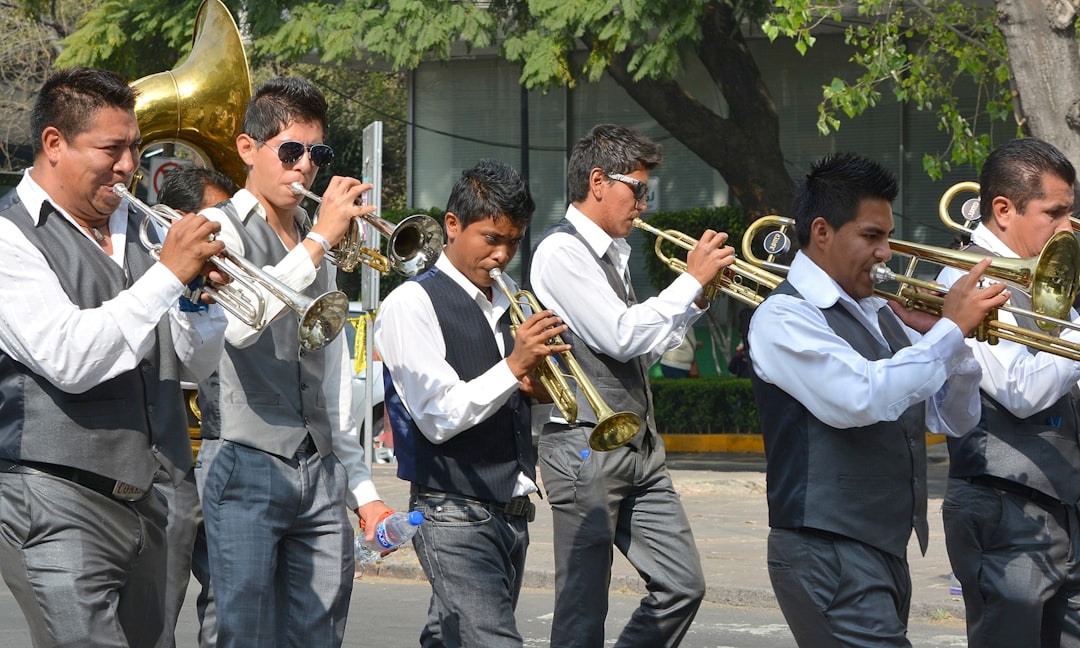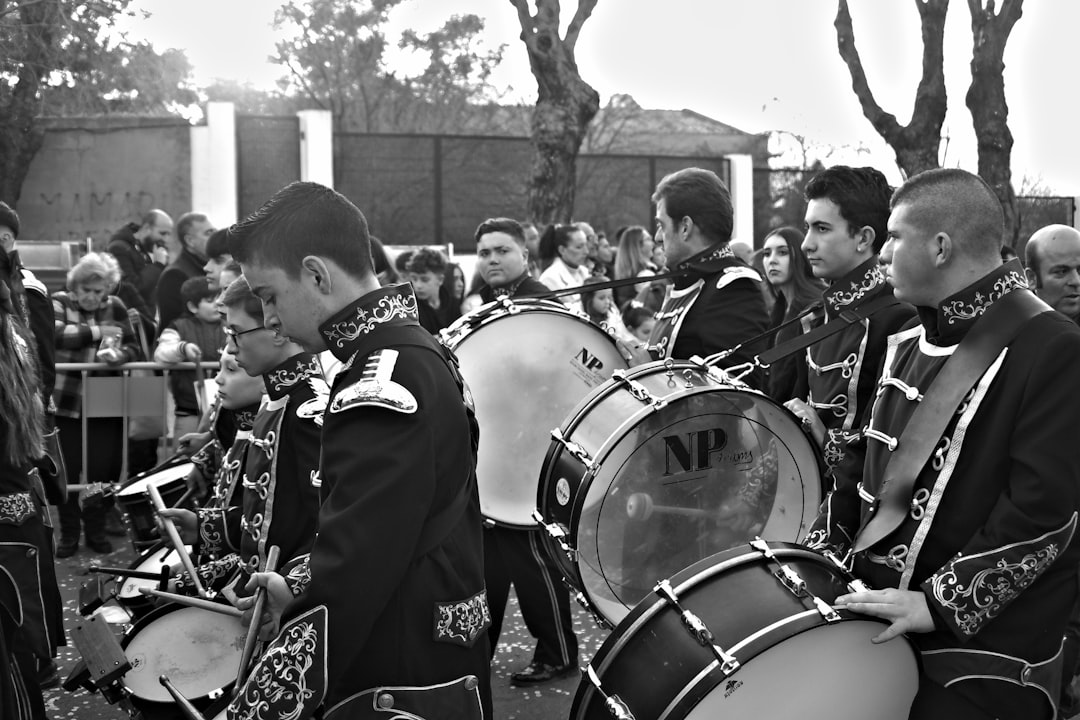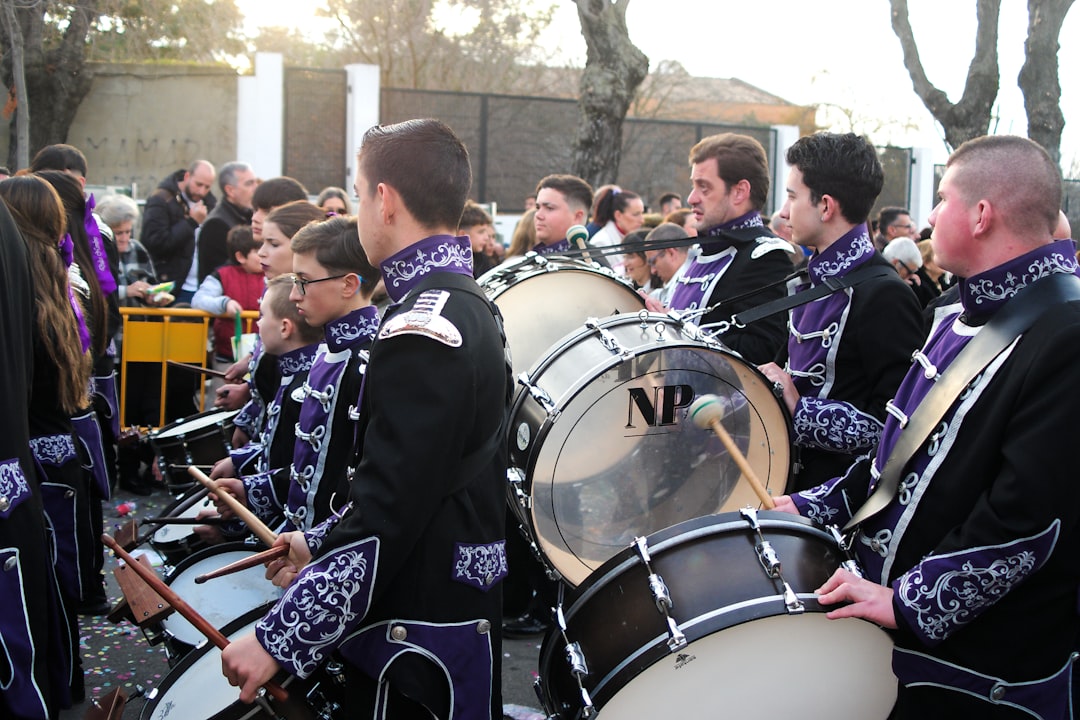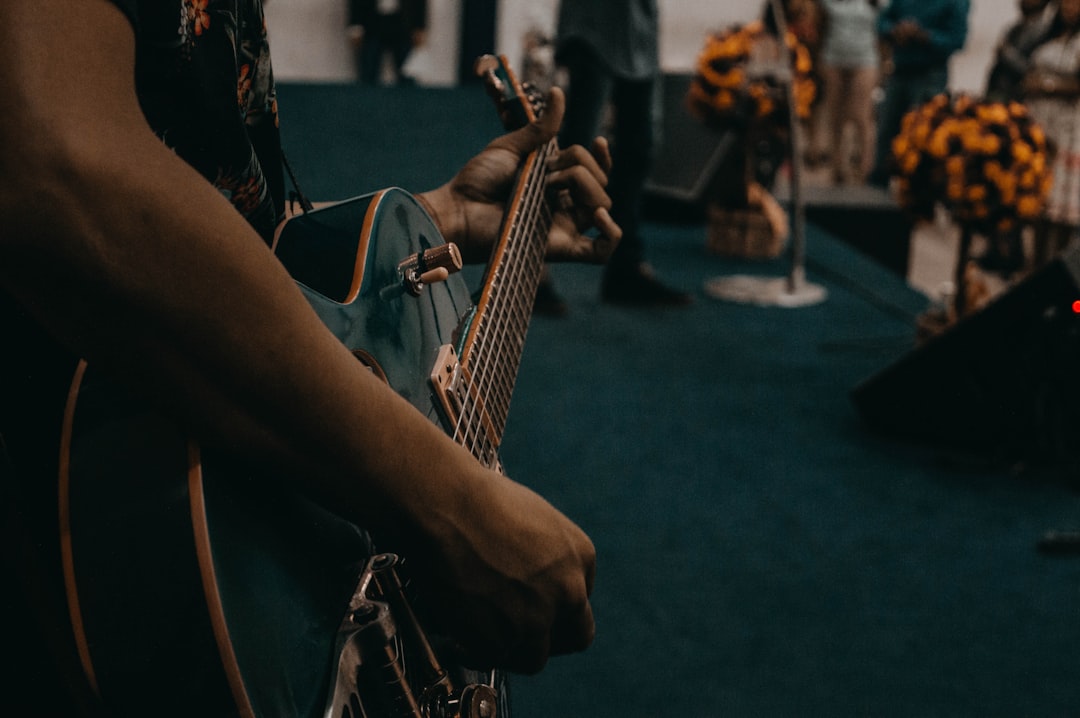

Engage prospects with a scan and streamline customer engagement with FREE QR code marketing tools by Sona – no strings attached!
Create a Free QR CodeFree consultation

No commitment

Engage prospects with a scan and streamline customer engagement with FREE QR code marketing tools by Sona – no strings attached!
Create a Free QR CodeFree consultation

No commitment
Band competition organizers increasingly face the challenge of turning physical interest into measurable digital action. Traditional promotional tactics such as flyers, printed tickets, and manual registrations often fail to capture attendee data or drive real engagement, making it difficult to optimize marketing spend or prove event ROI via offline attribution. These gaps frequently lead to missed high-value prospects, especially when potential attendees engage at events but their intent is not tracked or captured in the CRM.
In a digital-first world, bridging offline interactions with scalable, data-driven outcomes is now a core priority for event marketers and music event planners. QR codes can transform every event touchpoint, from event signage and registration tables to promotional merchandise, into gateways to online engagement with Sona QR. This empowers band competition organizers to capture attendee intent, automate lead capture, and dynamically enrich CRM profiles in real time without adding friction to the experience.
This guide details how QR codes supercharge band competition marketing and event management. You will find actionable strategies, example use cases, and an integrated approach that accelerates both audience engagement and conversion for live music events. The following sections highlight common pain points and reveal how a data-driven, QR-powered strategy delivers valuable, real-world solutions for every stage of your event. For a broader look at QR strategy, see QR codes in marketing.

Band competition organizers have traditionally relied on printed schedules, manual sign-up sheets, and word-of-mouth to capture and engage audiences. These analog methods introduce friction for participants and attendees, slow down registration, limit the breadth and quality of data captured, and make it difficult to follow up with interested people after the event. It is common for high-intent prospects to engage deeply by reviewing schedules, watching soundcheck demos, or attending showcases without ever submitting a form or being logged in a CRM. This creates missed leads, weak attribution, and a lack of insight into what truly drives attendance and revenue.
QR codes streamline these workflows by turning every physical asset into a measurable trigger for digital action. Scanning a code takes users directly to mobile-friendly experiences like registration, performance schedules, voting forms such as Google Forms QR, and sponsor offers. Each scan adds to a living profile of the attendee in your database, helping you identify who is exploring, who is buying, and who needs a nudge. A modern QR program can replace slow, paper-based processes while creating a tighter connection between marketing, operations, and on-site engagement.
When implemented thoughtfully, QR codes make the attendee experience easier while giving organizers the data they need to measure and improve outcomes. Platforms like Sona QR can support every step, from creation and design to analytics and CRM integration, so your team spends less time stitching tools together and more time delivering a memorable event.

Band competition organizers face a unique set of offline-to-online challenges. Posters, stage banners, paper tickets, and printed programs are crucial for awareness, yet they rarely convert interest into measurable action. Without a simple mechanism to capture contact details or intent on the spot, even enthusiastic fans and prospective participants can slip through the cracks. QR codes bridge this gap by letting people register, vote, donate, download an app, or follow a social channel in seconds, as seen in concerts and festivals. This not only reduces friction for the audience, it gives organizers timely data to guide decisions and drive ROI.
Dynamic QR codes solve another common problem in live events: the need to update content quickly. Schedules change, lineups shift, and sponsor promotions evolve. Instead of reprinting materials, you can update the destination behind a dynamic code so that every scan takes people to the latest information. That flexibility saves money and prevents confusion. It also creates a stream of engagement data that you can attribute to specific placements and time windows, which makes conversations with sponsors and stakeholders far more credible. When updates are likely, use dynamic QR codes.
For band competition organizers, this adds up to higher registration rates, better engagement, and a more complete picture of performance across channels. It also enables more precise sponsor reporting, since you can show not just impressions but actual scans and actions taken.
Choosing the right QR code format helps align scanning behavior with your desired outcome. Band competitions benefit from a mix of formats that map to typical attendee, participant, and sponsor actions. The most impactful formats tend to be those that remove steps, reduce confusion, and collect useful data.
Dynamic codes work best for most event use cases because you can update the destination without reprinting. If you are certain a destination will not change, such as a static PDF of the competition rules, a static QR can be acceptable; see pdf qr codes.

The average band competition is filled with high-visibility surfaces, which makes it fertile ground for QR activation. Yet many of these surfaces produce little to no measurable data in their default state. That is the opportunity. When you transform tickets, posters, programs, stage signage, wristbands, and merchandise into scannable touchpoints, you capture intent at the exact moment excitement is highest.
Think about the moments when attendees and participants pause, look for information, or seek direction. At the entrance, people want schedules and seating details. Near the stage, they are ready to vote or follow a band. At the merch table, they want discounts or exclusive content. Every one of these moments is a chance to earn a scan and move the person deeper into your digital funnel. Over time, you learn which placements are most effective, and you can redeploy budget to the assets that convert best.
When you meet attendees and performers where their attention is already focused, QR codes feel helpful rather than intrusive. That ease of use increases scan rates, boosts conversion, and produces data that informs your next event.

QR codes are most effective when they are tightly aligned with specific goals. In band competitions, the highest-impact use cases map to registration, on-site participation, and post-event follow-up. Each use case removes friction for the audience and replaces manual work for organizers, while generating data you can use for segmentation and retargeting.
One of the strongest applications is digital registration. By placing a prominent code on all pre-event materials, you allow people to pre-register from any flyer, poster, or social graphic. On event day, codes on signage and lanyards can accelerate check-in and reduce lines, which improves the attendee experience and frees staff to handle higher-value tasks. Every registration is automatically captured in your CRM, complete with source, time, and location. For more details, see QR ticketing.
Voting and feedback are natural fits for QR as well. Audience choice awards and judge scoring often rely on paper ballots or hastily collected notes. A scan-to-vote or scan-to-score system eliminates errors, reduces counting time, and produces exportable data for later analysis. You can also use QR to deliver exclusive content to VIPs and backstage guests, which adds perceived value and can lift sponsor ROI by providing measurable engagement.
These scenarios tackle the long-standing challenge of high engagement going untracked. Instead of guessing who participated and how, you can see it in your analytics and respond accordingly. For pre-event outreach, add QR to flyers to capture interest early.
Every QR scan tells a story about intent. By deploying multiple codes across the attendee journey, you can translate that intent into structured segments and targeted follow-ups. The key is to plan your code map so that each placement signals a journey stage and a likely next action. Once scans flow into your CRM or marketing platform, you can trigger messaging that reflects what the scanner did, where they were, and what they might do next.
For band competitions, meaningful audience distinctions include competitors versus general attendees, VIPs versus general admission, students versus parents, sponsors versus media, and first-time attendees versus repeat fans. Codes on competitor packets and dressing room doors should be tagged differently than codes on public posters or merchandise. Codes used by judges, volunteers, and crew should populate operational lists that receive schedule updates, policy reminders, or emergency alerts. This structure ensures your database evolves in real time with the event.
With Sona QR, each code becomes a smart entry point in your funnel. You can manage tags, map codes to campaigns, and send scan events into your CRM automatically. This turns anonymous foot traffic into known audiences and helps you nurture people based on real behavior rather than assumptions.
QR codes shine when they connect offline buzz to digital action across every channel you use. A consistent scan-to-destination strategy ensures that posters, emails, social posts, stage screens, and swag all contribute to a single, coherent journey. The benefits multiply when each scan is measured and fed into your analytics, giving you a complete view of what is working.
Think about QR not as a standalone tactic but as connective tissue. If a person first sees a poster at a coffee shop, scans to pre-register, receives a confirmation email with another QR for the voting app, then later scans a stage screen to vote, you have a clear record of the journey. You know where they came from, what interested them, and how to follow up. That level of clarity is what sponsors appreciate, and it is what lets you iterate confidently on future events. For practical ideas, see QR at shows.
A centralized platform like Sona QR helps you manage codes across channels, monitor performance, and push scan data to your CRM and ad platforms. The result is a connected funnel that captures demand at the source and converts it into measurable outcomes.
A well-run QR campaign follows a simple arc: choose the goal, pick the format, design for scanning, deploy to high-impact surfaces, and iterate based on data. The steps below align with the band competition environment and can be adapted to events of any size.
Start by defining a single, measurable goal for your campaign. Typical objectives include pre-registration before the event, on-site check-in, audience voting, judge scoring, sponsor lead capture, and post-event feedback. Choose one goal per code so that the call to action is specific and clear.
Choose static codes for destinations that will not change, such as a PDF of rules, and dynamic codes for everything that needs tracking or flexibility. Dynamic codes let you update the link and capture scan metadata without reprinting.
Design for the environment where the code will live. A code on a billboard needs to be larger and higher contrast than a code on a lanyard. Always pair the code with a benefit-driven call to action so people know what they get by scanning.
Roll out your codes on the assets that most closely align with your goal. Place the most important codes where foot traffic is heavy or wait times are common, since those are the moments when people are most willing to scan.
Monitor scan volumes, conversion rates, and time-of-day patterns. Use that data to refine placements, calls to action, and destinations in real time. After the event, roll the learnings into your next plan.
A repeatable checklist like this removes guesswork and keeps your team aligned. The more you run these cycles, the clearer your playbook becomes for future competitions.

Data is the difference between a clever idea and a scalable strategy. Without analytics, you cannot tell which posters drove registrations, which stage screens drove votes, or which sponsor placements produced qualified leads. Modern QR tools let you collect this information automatically and connect it to revenue and retention outcomes. This is what turns QR from a novelty into a core part of your growth system.
Go beyond counting scans. Track the full journey from scan to conversion and link it to rainmakers like ticket sales, merchandise revenue, and sponsor ROI. When your QR system is integrated with a CRM, each scan can enrich a contact profile, trigger workflows, and contribute to attribution models. This level of visibility helps you justify budget, negotiate sponsor packages, and prioritize the tactics that work best.
Sona QR captures real-world engagement and centralizes your codes and analytics. Sona.com extends that data into attribution and buyer journey insights, helping you connect scans to pipeline and closed revenue. The result is a performance-driven approach that scales with your event calendar.
A few best practices consistently separate top-performing QR programs from the rest. Start with clear goals, create distinct codes for each placement, and always provide a strong reason to scan. Then layer in analytics and automation so your team learns faster and does less manual work over time.
Creative placements are often the difference between a modest rollout and a transformative one. Placing codes on judge scorecards, practice room doors, backstage monitors, and even instrument cases turns operational moments into engagement opportunities. These placements do not compete with the audience’s attention yet still produce valuable signals that help you run a better event.
You can launch and track your first campaigns quickly with a centralized tool. Sona QR integrates with popular CRMs and analytics platforms, which makes it easier to automate follow-ups and see results without adding headcount.
QR codes are a strategic unlock for band competition organizers. They turn every poster, ticket, lanyard, and stage screen into an entry point for digital engagement while giving you the data to measure and improve. By replacing analog processes with scan-to-action experiences, you can eliminate blind spots, capture more first-party data, and tailor follow-ups to what attendees actually do.
The benefits compound across the event lifecycle. Before the show, QR codes accelerate registrations and app adoption. During the show, they enable voting, schedule updates, and sponsor interactions without friction. After the show, they power surveys, content access, and retargeting programs that keep your audience engaged. Along the way, every scan adds to a clearer, more actionable picture of your community.
If you adopt a data-first approach and deploy QR codes thoughtfully, you can close the gap between physical excitement and digital action. Tools like Sona QR and Sona help you manage codes, measure performance, and connect scans to revenue, so your team can focus on creating unforgettable experiences. With the right foundation, each competition becomes easier to execute, more measurable for sponsors, and more compelling for fans and performers alike. Start creating QR codes for free.
QR codes have transformed band competition organizers from static event planning into dynamic, engaging experiences that drive meaningful conversions. Whether it’s streamlining participant registration, enhancing audience engagement, or providing instant access to schedules and results, QR codes replace manual processes with seamless, mobile-friendly interactions that capture real-time data to boost event success.
Imagine knowing exactly which promotional materials attract the most competitors or spectators—and being able to optimize your campaigns instantly. With Sona QR, you can create dynamic, trackable QR codes in seconds, update campaigns on the fly without costly reprints, and link every scan directly to your event’s growth metrics. No missed leads, no guesswork—just smarter, more effective band competition management.
Start for free with Sona QR today and turn every scan into a new participant, a loyal fan, or a valuable insight that propels your event to the next level.
Organize a successful band competition by deploying dynamic QR codes on posters, tickets, and signage to streamline registration, enable real-time voting, and capture attendee data for measurable engagement and follow-up.
Key steps include defining clear campaign goals, choosing appropriate QR code types, designing and testing codes for scannability, deploying codes at high-impact event touchpoints, and tracking and optimizing performance with analytics.
Use QR codes to digitize registrations, enable mobile voting and feedback, provide exclusive content, and integrate scan data with CRM systems for personalized follow-ups and improved audience interaction.
Best practices include assigning unique QR codes to each asset, adding UTM parameters for tracking, educating staff to encourage scanning, offering immediate scan rewards, and using analytics to optimize code placement and messaging.
Promote your band competition by placing QR codes on print collateral, social media, direct mail, event signage, and merchandise to drive pre-registration, ticket sales, and engagement while measuring effectiveness through scan analytics.
Use Sona QR's trackable codes to improve customer acquisition and engagement today.
Create Your FREE Trackable QR Code in SecondsJoin results-focused teams combining Sona Platform automation with advanced Google Ads strategies to scale lead generation

Connect your existing CRM

Free Account Enrichment

No setup fees
No commitment required

Free consultation

Get a custom Google Ads roadmap for your business






Launch campaigns that generate qualified leads in 30 days or less.
